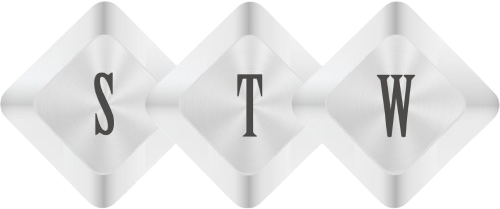How does blockchain work: A beginner’s guide
You might have heard the term Blockchain or bitcoin many times by now. Blockchain has actually come a long way from being a “term” or a buzzword to a complete technology with applications. The tale of digital currencies has swiped away the world by its feet. But, there is more to it. Blockchains has other implementations that are enhancing the businesses to another level.

In this article, we’ll talk about blockchains, how it works and its usages.
What is a Blockchain?
In short, Blockchain is the underlying technology on which bitcoins work. The blockchain is a public transaction ledger, where information cannot be appended from. It is a decentralized database system for transferring and storing huge amount of data or information through a highly secure environment than a traditional data storage system.
From the name itself, we can understand it, it consists of two things, blocks, and chains. Blocks are a chunk of data that are attached to each other through a virtual string. It uses the century-old technique of ledger. For example – imagine that I have bought a property from Mr. A today and the attorney enters the record of the entire transaction in the ledger with the timestamp. Now, I sell it to Mr. B after 8 months. It will again have a new entry in the ledger with the new timestamp but will not remove or edit the older one. Thus the record for each and every transaction about the property will remain there forever with the exact timestamp. Blockchains work in a similar way. Information updates and deletion or new creation do not disturb the older one and keeps attaching blocks of information one after another forming a chain.
How does Blockchain work?
Block is the chunk of information. The information contains different components along with the timestamp. Block is immutable, that means it cannot be edited when updating any component or part of the data.
The blockchain forms on a distributed architecture. That means the data lies on different nodes or personal computers. All the parties that own the information or the one whom the information is shared with, are involved in approving any changes or updates that are needed to be done on the blocks. The updates are made after the approval of all the parties involved. Approval can come through a digital signature or any similar technology. This is why managing blockchain is costly and crowdsourced and effort of many involved.
The blockchains can be used and updated by anyone using the internet. There is no centralized organization to secure the privacy of the information and millions of users can verify that any illegal update is being made on the information chunks but no one can change the information on it. It is quite a unique solution that provides security and transparency in a single system.
Technically, following are the way a blockchain work –
- The blockchain is a type of ledger or spreadsheet where information about transactions is recorded.
- Each transaction creates a hash. Hash is a string of numbers of letters containing the information about the transaction. Each and every update creates a new hash.
- Transactions are recorded in a block in the order of their occurrence. The order is a very important thing.
- The nodes or the participants check the hash to verify the changes.
- Each transaction is approved by all the nodes and then it is entered into the block.
- For each approved change, a new block is created.
- Each block refers to the previous block and function together. Thus it creates a blockchain.
Applications of the Blockchain
Blockchains are used in many industries to maximize the success and profitability.
Cryptocurrency
Cryptocurrency is the most popular application of the blockchain technology. Cryptocurrencies like bitcoin, litecoin, ethereum. These cryptocurrencies are a form of digital money. These allow the transfer of money from one person to another without adhering to a middleman.
Healthcare
Healthcare industry is a primary stage of using blockchain as a technology. However, it can provide a transparent health management system with medication monitoring and safer money transactions where NGOs can help those who cannot afford healthcare.
Education
Education sector can be revolutionized through the use of the blockchain technology. Universities, teachers, students, and employers can access student’s data marks, past records, criminal records (if any), the duration of training & certification. This will create a transparent system of education and employment opportunities later on. Through this system, even those extracurricular activities will be counted seriously.
Other than these, the blockchain technology can be used in energy saving, charity or virtually anything. But, to become popular in the mainstream industries, blockchain technology needs to change its way a lot. The financial regulations of different countries, security issues can be a threat to the virtual concept. Information is accessible to all, so banking transactions or personal information of the participants are also visible to others. Therefore it can lead to security threats to any individual or the nation if not handled responsibly. But, still, there is a lot of scope and hope for this technology to revolutionize businesses
